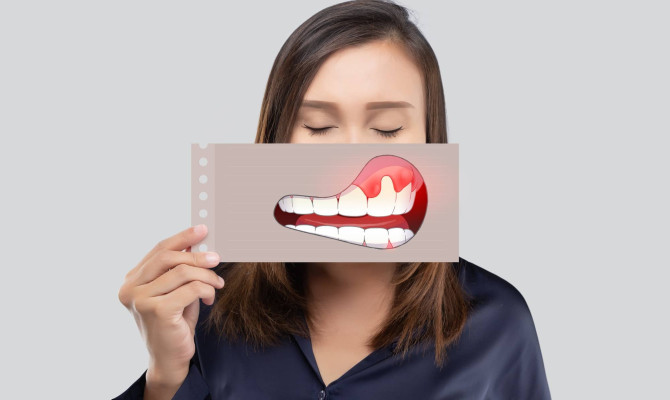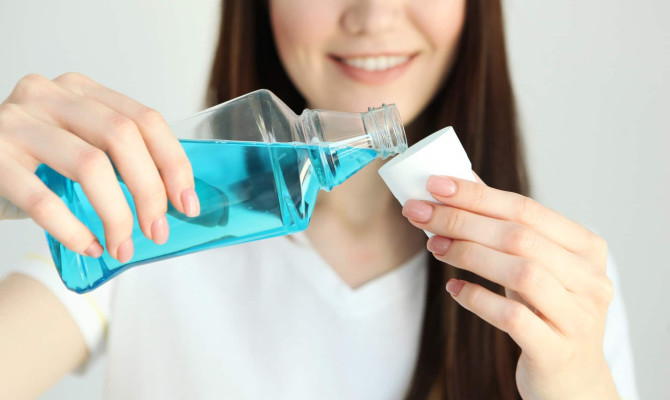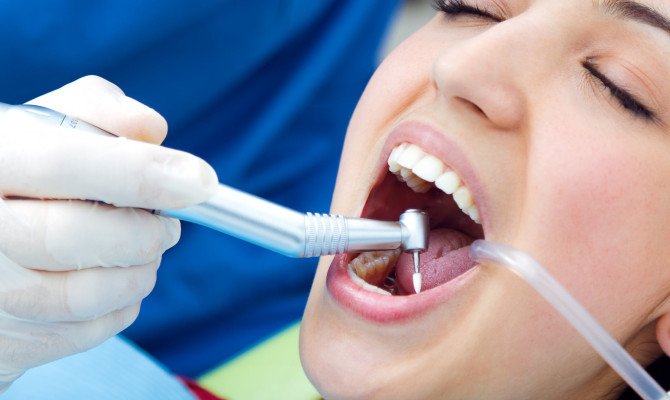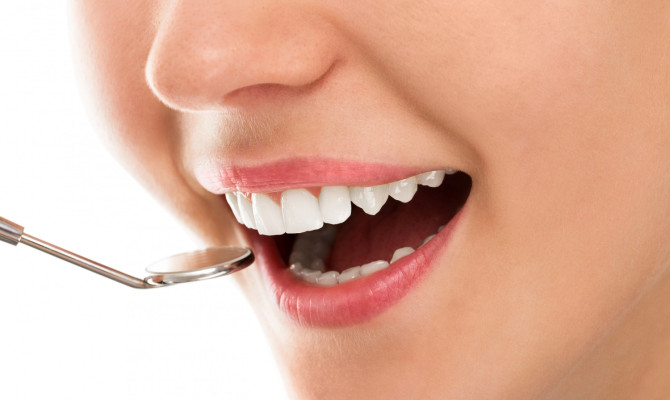See-Through Teeth: Causes, Symptoms & Management

- Enamel
- 12 Oct 2023
Overview
See-Through Teeth
The term “see-through teeth” refers to a condition in which the enamel covering the surfaces of the teeth becomes transparent, showing the dentin layer beneath. Thin enamel, enamel degradation from acidic meals, and other practices like tooth grinding can all cause this transparency. As a result, teeth may seem yellower or gray. This illness frequently causes higher tooth sensitivity and might be an aesthetic issue for people who want a more whitened and opaquer smile. 5 Overview | Researched based study from CDHP Dental Health Project

See-Through Teeth
What are See-Through Teeth?
- As you may know, our teeth contain an outer coating of protecting enamel. It is our teeth’s first line of defense against factors that are harmful to our oral health.
- The partially transparent enamel that protects the yellow dentin layer beneath gives our teeth their dazzling white appearance.
- If you begin losing this enamel layer, your tooth enamel can turn dull or transparent, with a waxy look in certain circumstances. When this happens, your teeth might appear exceedingly small.
- If you have observed your teeth becoming clearer at the tips, it might be because the enamel is gradually peeling away. If this occurs, the damage is permanent and can result in severe problems. 1 See-through teeth | Researched based study from Dentaly
Causes
Causes for See-Through Teeth
Why are my teeth becoming see-through?
The following represent a few of the probable causes of see-through teeth: 4 Causes | Researched based study from CDHP Dental Health Project
Celiac disease:
- It is an autoimmune illness induced by gluten consumption.
- While the most well-known symptoms of Celiac disease are gastrointestinal, additional symptoms, such as inadequate enamel coating, might emerge as a result, leading to transparent teeth.
Loss of enamel with age:
- The enamel that covers our teeth gradually wears away and erodes as we age.
- Enamel is an outer layer that is rich in minerals. It gives teeth their natural white, opaque appearance.
- As enamel thins with age, it lacks minerals, and its strength as a material deteriorates.
- It becomes more transparent as a result, enabling more of the yellow dentin underneath to shine through.
- This is why older people frequently have transparent teeth at the biting edge and cusps.
Habits of grinding and chewing:
- Grinding, clenching, or violently biting your teeth causes severe wear on the enamel.
- This persistent high pressure hastens the erosion procedure, wearing away enamel faster than usual.
- If chewed on violently, hard or sticky candy, ice cubes, pens, and other items can all accelerate wear.
- Nighttime teeth grinding is another typical cause.
Acid erosion:
- Over time, frequent contact with acidic meals and drinks wears away enamel.
- Acids in citrus fruits, vinegar, vegetables, alcohol, fruit juices, and sports drinks drain minerals from dental enamel.
- Each acid intake thins and weakens the enamel by removing trace quantities of mineral content. Translucency rises when the enamel thins.
Inadequate dental hygiene:
- Allowing plaque to accumulate on your teeth promotes enamel loss.
- As a waste product, bacteria in tooth plaque create acids.
- Over time, these acids drain essential minerals from the enamel.
- Plaque stays and gradually thins enamel without adequate daily oral hygiene and expert cleanings.
Factors of genetic or developmental origin:
Some people have naturally thinner enamel, while others have abnormalities in enamel or mineral composition. This can predispose individuals to erosion and transparent teeth at a younger age. Thickness can also be affected by developmental abnormalities such as enamel hypoplasia.
Enamel hypoplasia:
- It is a hereditary disorder that causes thin tooth enamel and, as a result, transparent teeth.
- Enamel hypoplasia produces hypo-mineralization, which causes teeth to be see-through around the edges.
- This disease can result in transparent baby and adult teeth. 4 Causes | Researched based study from CDHP Dental Health Project
Genetics:
- Your genes can also influence tooth transparency.
- People are more likely to experience this issue if both of your parents have translucent teeth.
Fluorosis:
- Enamel hypoplasia can be caused by consuming too much fluoride during early teeth growth. Because of this underdevelopment, the enamel becomes thin and porous.
- Too much supplementary fluoride can damage enamel maturation when teeth are still growing beneath the gums. This might result in hypo mineralization or hypoplasia of the enamel.
- The enamel grows with a more transparent thin, porous, undermined structure.
- Mild fluorosis appears as white lines or flecks, whereas severe fluorosis appears as yellow to brown discoloration.
Tetracycline discoloration:
- Tetracycline is a medication that can permanently discolor growing teeth in children under the age of eight.
- It creates discoloration in the form of gray, brown, or yellow.
- Children who take tetracycline, an antibiotic, while their teeth are still forming may suffer discoloration when the medication is absorbed into the enamel structure.
- This causes stains and opacity in the enamel to be gray, brownish, or yellowish.
- To avoid this effect, tetracycline should be discontinued in children under the age of eight and in pregnant women. 4 Causes | Researched based study from CDHP Dental Health Project
Symptoms
Symptoms of See-Through Teeth
Despite the fact that the enamel coating shields our teeth from a number of damaging chemicals, indications of translucent or transparent teeth are extremely visible, especially in the early stages. Depending on the extent of the damage, you may feel the following symptoms prior to tooth erosion becoming visible: 1 Symptoms | Researched based study from Dentaly
Sensitivity caused by see-through teeth:
- Tooth sensitivity is most common while consuming hot or cold foods.
- It can cause severe tooth discomfort while consuming something extremely cold.
Dry oral cavity:
- It occurs as a result of a decrease in saliva production.
- Whenever this happens, the balance of pH in the oral cavity may drop and become more acidic due to the inability of saliva that helps preserve equilibrium.
- If saliva is insufficiently thick to provide a protective layer on the teeth, this might also put them at risk of erosion.
Canker sores:
- Canker sores might appear in the oral cavity and on the surface of your tongue if acidic chemicals cause erosion of enamel. 1 Symptoms | Researched based study from Dentaly
Treatment
Treatment for See-Through Teeth
Can you fix transparent teeth?
There are various treatment methods that can help to fix see-through teeth: 5 Treatment | Researched based study from CDHP Dental Health Project
Dental bonding:
- A tooth-colored composite resin substance is applied to the teeth. The material is applied by the dentist and sculpted into shape with a curing light.
- The composite resin bonds immediately to the tooth surface, forming a smooth, opaque coating that conceals any translucency.
- Bonding not only conceals weakening enamel, but it may also fix chips and gaps for a more seamless appearance.
Dental crowns:
- They are tooth-shaped crowns that cover the tooth’s exposed surface. They cover see-through teeth completely with a durable, natural-looking material.
- A tooth is cut down around 2 mm all around. To restore the tooth’s form, size, and function, an imprint is recorded and a porcelain or ceramic crown is made. After that, the restoration is bonded onto the trimmed teeth.
Veneers for the teeth:
- Veneers are ultra-thin ceramic or porcelain resin that are applied to the front teeth. They use a natural-looking, translucent material to totally cover the exposed tooth surface.
- A tiny layer is trimmed off the front of the tooth, generally less than 1 mm. An imprint is taken, and a veneer is custom-made to fit perfectly over its front surface.
- Veneers, when glued in place, completely conceal any translucency or discoloration.
- Veneers are a longer-lasting treatment that can significantly enhance the appearance of see-through teeth.
Teeth whitening:
- Dental procedures can be used to lighten the entire tooth, along with teeth whitening gels and strips that can help in lessening the transparent spots. This reduces the appearance of transparency.
- Peroxide ingredients in whitening treatments penetrate the tooth enamel to bleach off deep stains.
- The see-through areas mix in more effectively and are less noticeable when the general color is lightened.
- Whitening, on the other hand, cannot make enamel less transparent. 5 Treatment | Researched based study from CDHP Dental Health Project
Dental inlays and Onlays:
- They are resin restorations. They are designed to hide isolated patches of translucency on the chewing surface of a tooth.
- An imprint is taken, and a bespoke inlay or Onlay is created in a laboratory to suit the prepped section of the tooth.
- After that, the repair is cemented in place to produce an opaque coating.
- Onlays cover the full biting surface, whereas inlays fill in the gaps. They offer solid, natural-looking restorations.
Clear braces:
- Braces with ceramic brackets and clear aligners can correct gaps between teeth that expose translucency.
- This increases the tooth line’s continuity. Clear ceramic brackets or detachable clear aligners correct teeth without the visible metal hardware of regular braces. 5 Treatment | Researched based study from CDHP Dental Health Project
Natural Remedies
Natural Remedies for See-Through Teeth
How can I fix my translucent teeth naturally?
While there is no way to avoid translucent teeth caused by hereditary conditions such as hypoplasia of the enamel or celiac disease, you may take precautions against acidic erosion. The greatest approach to prevention is to maintain excellent dental hygiene by brushing and flossing on a regular basis with fluoride toothpaste. 1 Natural Remedies | Researched based study from Dentaly Other natural methods are:
When consuming acidic beverages, use a straw:
- Use a straw for acidic beverages like citrus juice and soft drinks to reduce enamel erosion, especially on the front teeth.
Consuming plenty of water:
- Not consuming enough water is a major cause of dry mouth and saliva thinning.
- Gargling with a glass of water after eating is also a good method to wash off the acids that have accumulated in your mouth and helps to reduce the pH level.
Control acid reflux:
- If you have acid reflux, avoid eating spicy or very acidic meals.
Increasing and thickening oral saliva:
- Chewing sugar-free chewing gum containing xylitol between meals will help increase saliva production and reduce acid levels in your mouth.
- Xylitol can also aid in strengthening teeth, and increased saliva production may protect the enamel and assist to combat germs.
Dental cleaning at the clinic:
- Visiting your dentist twice a year to visit the hygienist for a dental cleaning (scale and polish) is an excellent strategy to avoid erosion of any kind.
Use re-mineralizing toothpaste:
- To help build the tooth enamel, use re-mineralizing toothpaste.
- Re-mineralizing your enamel will enhance your oral hygiene, minimize dental discomfort, and lessen tooth sensitivity. 1 Natural Remedies | Researched based study from Dentaly
FAQs
FAQs About See-Through Teeth
Q. Are transparent teeth bad?
- Transparent teeth, or see-through enamel, are not necessarily harmful to your dental health.
- Thin enamel or erosion of enamel, which can result in translucent teeth, can enhance tooth sensitivity and put you at risk for dental issues including cavities.
- Furthermore, some individuals may find translucent teeth to be unsightly.
- If you have translucent teeth, you should see a dentist to find out the underlying reason and discuss various treatments or preventative measures to protect your dental health and, if desired, improve the visual appeal of your teeth. 3 FAQs | Researched based study from American Dental Association
Q. Are see-through teeth normal?
- Mild to moderate transparency focused on the biting edges of rear teeth is a common aging feature.
- Our enamel thins with time, revealing more of the underneath yellowish dentin along the margins and cusps.
- However, in a younger adult, moderate-severe thinning and transparency are not natural. This typically means that additional causes are hastening enamel erosion.
- Translucent teeth are even more concerning if they involve the visible front teeth.
- As the thin enamel chips away, it can reveal ugly dark dentin along the gum line, resulting in pitting and fraying. This aggravates the look. 4 FAQs | Researched based study from CDHP Dental Health Project
Q. How can I restore my enamel?
- In certain circumstances, utilizing re-mineralizing toothpaste or having dental procedures such as bonding or veneers may be able to reverse transparent teeth.
- The ideal method, however, is to avoid enamel degradation in the initial place. 2 FAQs | Researched based study from CDHP Dental Health Project
Conclusion
Maintain Proper Dental Hygiene to Avoid See-Through Teeth
Maintaining a proper dental hygiene practice is the greatest approach to avoid having see-through or translucent teeth. While your tooth enamel degradation may be caused by a hereditary issue or another health problem, better dental hygiene can always assist. If you detect any changes in your teeth, seeing a dentist as soon as possible will allow you to minimize the damage. 2 Conclusion | Researched based study from CDHP Dental Health Project
Any feedback on this article?
 This Articles content was accurate
This Articles content was accurate Very Informative Article
Very Informative Article I have a question or a comment
I have a question or a comment
 This article contains inaccurate content
This article contains inaccurate content This article was not helpful
This article was not helpful I have a question or a comment
I have a question or a comment
We appreciate your helpful feedback!
Checkout our social pages
References
-
Dentaly
See-through teeth | Symptoms | Natural Remedies
-
CDHP Dental Health Project
FAQs | Conclusion
-
American Dental Association
FAQs
-
CDHP Dental Health Project
Causes | FAQs
-
CDHP Dental Health Project
Overview | Treatment



































